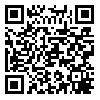Volume 7, Issue 20 (3-2012)
goljaam 2012, 7(20): 7-20 |
Back to browse issues page
Download citation:
BibTeX | RIS | EndNote | Medlars | ProCite | Reference Manager | RefWorks
Send citation to:



BibTeX | RIS | EndNote | Medlars | ProCite | Reference Manager | RefWorks
Send citation to:
Ghani A. Peacock Motifs on Hand-woven Kilims of Qashqai and Shahsavan Tribes. goljaam 2012; 7 (20) :7-20
URL: http://goljaam.icsa.ir/article-1-467-en.html
URL: http://goljaam.icsa.ir/article-1-467-en.html
Isfahan University of Arts
Abstract: (6652 Views)
Peacock is one of the most prominent animal motifs which can be seen as abstract or geometric shapes in kilims woven by nomadic tribes, especially Shahsavan and Qashqai. The diversity of this motif in hand-woven kilims of these two tribes led the author to introduce, classify and then analyze it from different viewpoints such as color and shape. This paper tries to answer the question: What are the most important similarities and dissimilarities of peacock motifs woven by Qashqai and Shahsavan tribes? And which tribe shows more ethnic diversity? The hypothesis suggests that peacocks woven by Qashqai tribe enjoy more variety of form and color than those by Shahsavan tribe. The research method is field study (especially by finding of peacock motif) and library-based one, and this is of analytical-descriptive research. Two-heads peacocks of Shahsavan tribe which have been transferred to the kilims of Qashqai tribe and the Khamse Arab tribes such as Arab Jenni tribe via migration and other communications are seen as the most important findings of this study.
Type of Study: Research |
Received: 2018/02/26 | Accepted: 2018/02/26 | Published: 2018/02/26
Received: 2018/02/26 | Accepted: 2018/02/26 | Published: 2018/02/26
| Rights and permissions | |
 |
This work is licensed under a Creative Commons Attribution-NonCommercial 4.0 International License. |






